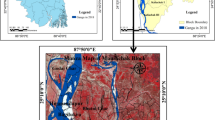Abstract
The failures of the Mariana and Brumadinho tailings dams in Minas Gerais, Brazil, had severe environmental repercussions and caused many fatalities. What should or could have been done to prevent these kinds of accidents? This paper discusses the management practices, relevant legislation, and supervision of tailings dams in Brazil, as well as the possible causes of these dam breaks, and evaluates whether the measures taken by National Mining Agency (ANM) will prevent more such accidents. Intensive investigation of these accidents revealed some similarities and discrepancies. The failure mode for both tailings dams was liquefaction flow. Considering that many other tailings dams are in similar conditions, it is likely that further failures may occur, despite the measures taken by the ANM.
Zusammenfassung
Das Versagen der Tailings-Dämme von Mariana und Brumadinho in Minas Gerais (Brasilien) verursachte massive Umweltfolgen und zahlreiche Todesopfer. Was sollte oder hätte getan werden können, um solche Unfälle zu verhindern? Dieses Paper diskutiert Management-Praktiken, einschlägige Rechtsvorschriften und Überwachung von Tailings-Dämmen in Brasilien sowie mögliche Ursachen der Dammbrüche. Weiterhin wird bewertet, ob die ergriffenen Maßnahmen der nationalen Bergbehörde (ANM) weitere Unfälle verhindern wird. Intensive Untersuchungen der Unfälle offenbarten einige Ähnlichkeiten und Unstimmigkeiten. Die Schadensart für beide Tailings-Dämme war Liquefaction. In Anbetracht der Tatsache, dass sich viele weitere Tailings-Dämme in ähnlichem Zustand befinden, ist trotz der seitens ANM ergriffenen Maßnahmen wahrscheinlich, dass weitere Unfälle passieren.
Resumen
Las fallas de las presas de colas de Mariana y Brumadinho en Minas Gerais (Brasil) tuvieron graves repercusiones ambientales y causaron muchas muertes. ¿Qué debería o podría haberse hecho para prevenir este tipo de accidentes? En este trabajo se examinan las prácticas de gestión, la legislación pertinente y la supervisión de los diques de colas en Brasil, así como las posibles causas de las roturas de esos diques y se evalúa si las medidas adoptadas por la Agencia Nacional de Minería (ANM) evitarán que se produzcan más accidentes de ese tipo. La investigación intensiva de estos accidentes reveló algunas similitudes y discrepancias. La falla en ambos diques de colas fue el flujo de licuefacción. Teniendo en cuenta que muchos otros diques de colas se encuentran en condiciones similares, es probable que se produzcan más fallos, a pesar de las medidas adoptadas por la ANM
抽象
帷幕注浆可以减少矿井涌水量,保护区域地下水资源。然而,传统垂直钻进方法不适于云南茅坪铅锌矿的峡谷陡峭高山区。充分考虑了茅坪铅锌矿区域构造、地质和水文地质条件之后,综合运用不同钻进技术(垂直钻进、小曲率倾斜钻进和S型定向钻进)从矿井大巷建立注浆帷幕。混合钻进方法解决了井下钻进、高水压注浆和高角裂隙等困难。运用注水试验、灌浆质量孔检验、近距离孔电阻率勘探等方法确定注浆帷幕的连续性和渗透性。注浆效果显明,保障了矿工安全和深层矿产资源可持续开采,使早期不可开采资源得以开采。

(modified from Morgenstern et al. 2016)

(modified from public images first shown on TV by Globo)

(modified from public images first shown on TV by Globo)

(modified from public images first shown on TV by Globo)
Similar content being viewed by others
References
ANM (Agência Nacional de Mineração) (2019) – Resolução No. 13, de 08 de agosto de 2019. https://www.anm.gov.br/assuntos/barragens/resolucao-anm-no-13-de-8-de-agosto-de-2019.pdf/view. (Accessed 26 Jan 2020) (in Portuguese).
ANM (2020) – Classificação de barragens de mineração. https://www.anm.gov.br/assuntos/barragens/pasta-classificacao-de-barragens-de-mineracao/plano-de-seguranca-de-barragens. (Accessed 30 Jan 2020) (in Portuguese).
Bowker LN, Chambers DM (2015) The risk, public liability, and economics of tailings storage facility failures. https://files.dnr.state.mn.us/input/environmentalreview/polymet/request/exhibit3.pdf. (Accessed 25 Jan 2020)
CAD (Canadian Dam Association) (2014) Technical bulletin: application of dam safety guidelines to mining dams. Canadian Dam Assoc, Toronto
Chambers DM, Higman B (2011) Long term risks of tailings dam failure. https://ofmpub.epa.gov/eims/eimscomm.getfile?p_download_id=513583. (Accessed 25 Jan. 2020)
Costa JE (1985) Floods from dam failures. US Geol Surv Rep 85–560:54p
ICOLD (1996) Tailings Dams and Environment Review and Recommendations. Bulletin, Paris, France
ICOLD (2001) Incident Case Records Tailings Dams Risk of Dangerous Occurrences. United Nations Publications, US
MAC (2017) A guide to the management of tailings facilities. The Mining Assoc of Canada, Canada
MacLeod HN, Watts BD, Plewes H (2015) Best Practices in Tailings Dam Design. CIM Canadian Institute of Mining, Metallurgy and Petroleum, Montreal
Morgenstern N, Vick SG, Watts BD, Viotti C (2016) The Fundão Tailings Dam Investigation. https://fundaoinvestigation.com/the-panel-report/. (Accessed 20 Jan 2020)
Owen JR, Kemp D, Lèbre È, Svobodova K, Murillo GP (2020) Catastrophic tailings dam failures and disaster risk disclosure. Internat J Dis Risk Redu 42–101361:1–10
Rico M, Benito G, Diez-Herrero A (2008) Floods from tailings dam failures. J Hazard Mater 154:79–87
Robertson PK, Melo L, Williams D, Wilson, GW (2019) Report of the Expert Panel on the Technical Causes of the Failure of Feijão Dam I. www.b1technicalinvestigation.com/report.html. (Accessed 19 Jan 2020)
Author information
Authors and Affiliations
Corresponding author
Rights and permissions
About this article
Cite this article
Koppe, J.C. Lessons Learned from the Two Major Tailings Dam Accidents in Brazil. Mine Water Environ 40, 166–173 (2021). https://doi.org/10.1007/s10230-020-00722-6
Received:
Accepted:
Published:
Issue Date:
DOI: https://doi.org/10.1007/s10230-020-00722-6




